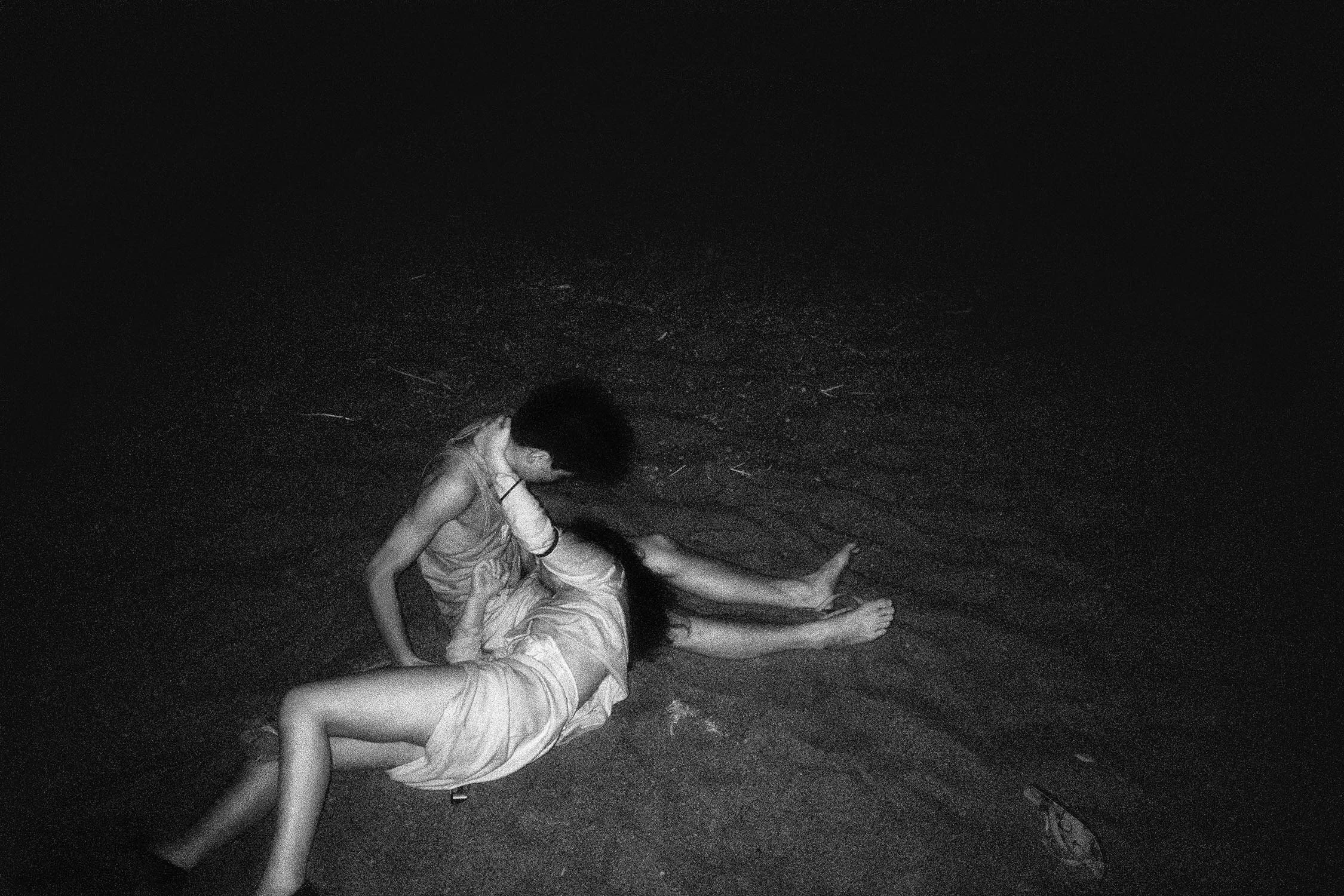One evening in the early 1970’s, artist and photographer, Kohei Yoshiyuki was strolling through Tokyo’s Chuo park. In Japan, it’s still common for lovers to use city parks for trysts because they offer privacy from their family and cost nothing. That night, Yoshiyuki noticed couples and even small groups of love makers but he was only interested in the people he discovered surrounding them. Small throngs of voyeurs were peering feverishly or stalking through bushes trailing hungry, pawing couples. Yoshiyuki watched someone silently sink to their hands and knees to inch closer to amorous fumbling, then recede, then inch back again. Yoshiyuki was suddenly observing an aspect of his own culture that he knew nothing about. He returned and spent many nights eventually befriending and photographing the voyeurs. He shot on night film and his subjects appear in black and white high contrast. The resulting images are wild, eerie, unnerving and libidinous.
In 1979, Kohei Yoshiyuki presented The Park in Tokyo’s Komai Gallery. The gallery was darkened and as each person entered they were handed a flashlight. The photographs were printed life-size and larger-than-life so that the viewers, as they lit their way, were implicated in acts of voyeurism too. Yoshiyuki’s presentation became a curious examination on the topic of consent. In every image the identities of the lovers are artfully concealed by angles and timing. On the other hand, the faces of the voyeurs are revealed. All the while, the real name of Kohei Yoshiyuki still hasn’t been revealed and his identity is anonymous today. The show was a total sensation among a stylish Tokyo crowd but once the exhibition was over, nothing happened.
Yoshiyuki wasn’t legitimately recognized by the art community until two decades later. In 2006, Martin Parr, British contemporary photographer, included a piece of The Park in his comprehensive review of photo books titled, The Photobook: A History, Volume III. One year later, Yossi Milo Gallery in New York held a widely (widely) publicized exhibition. The works then went on become part of an exhibition series called Exposed: Voyeurism, Surveillance and the Camera at The Tate in London in 2010. That same year it joined the Contemporary Collection at SF MoMA in San Francisco in 2010; in 2011 it was a part of Night Vision: Photography After Dark at The Met in New York; and was included prominently in the Venice Biennale’s main exhibition The Encyclopedic Palace in 2013.
The art world is, by definition, obsessed with voyeurism. Since these photos were taken some fifty years ago, culture has also started opening doors to less abstract examinations of consent than the one Yoshiyuki presented. Voyeuristic Disorder has been classified as a mental illness and paraphillic disorder but only when the persons prurient nature is harmful and obsessive. Whether one classifies as having a disorder or only has a passing interest, there are now forms of ethical sexual voyeurism available, particularly to anyone savvy enough to contact a professional sex worker.
The photographs from The Park were printed in a monograph by Yossi Milo Gallery in 2007 with a forward by contemporary Nobushi Araki. A few old editions from that show are sometimes floating through special bookstores like Artbook DAP and Dashwood Books, both located in New York. For newer editions, Yossi Milo reprinted The Park in 2019 and still has limited copies available if you write them. The Park has become a star in the annals of art book history because it has relevance that has spanned decades even if it’s notoriety still qualifies as obscure. Yoshiyuki handed his viewers a kaleidoscope to publicly examine the definition of voyeurism; and a flashlight to personally examine the topic of consent. While photographs from Kohei Yoshiyuki’s The Park capture a moment in time in Tokyo, the bigger questions inherent in his work are still unanswered and still part of our cultural dialogue today.
peep*ing Tom
/,pēpiNG ‘täm/
Origin ENGLISH
Godiva, Lady > peeping Tom
mid 18th century: from the name of the person said to have watched Lady Godiva ride naked through Coventry


